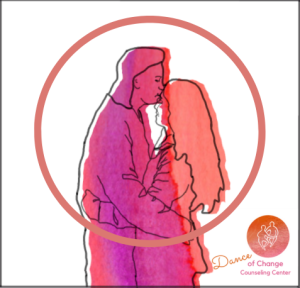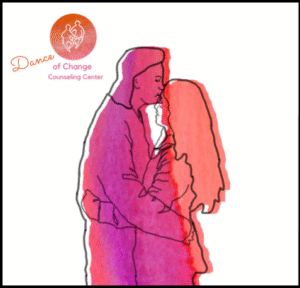
The Story of Hillary and Mateo
When Hillary and Mateo entered our office, their biggest concern was trust. Mateo had two years of sobriety at this point, but prior he had vehemently denied his drinking and tried to hide it from Hillary. She was not sure she would ever be able to trust him again. She did not want to go on living in constant fear of another relapse. Thoughts like these kept her up at night and made her question her marriage.
Mateo had concerns of his own. After all, he had done the difficult work of recovery. He had made repairs and amends with Hillary over and over again, but it was like none of that mattered. Hillary could only see the old him, the alcoholic. No matter what he did, or how much he changed, it seemed she would always be stuck in the past. He was not sure he could live like that for the rest of his life.
The Story of Tammy and Martha
Another couple, Tammy and Martha, were also questioning their marriage. Though they were publicly recognized in their community as a power couple, inside the cracks of their marriage had been growing. They had become too big to ignore. The fights between them were so loud and intense that it scared them both, and they both felt ashamed and embarrassed when their neighbors expressed concern. Neither of them wanted to be in a toxic marriage, yet, lately that was exactly what it felt like. Emotional safety was nonexistent.
Couples like these come to my office seriously questioning their marriage. Some are already on the brink of divorce or separation. Others, are seriously considering it, but still unsure. In either case, I often recommend discernment counseling as a place to start.
What is Discernment Counseling?
Discernment Counseling is a type of couples counseling where one or both partners are questioning whether to leave or stay in the relationship. It’s a short-term, intensive approach geared towards helping couples arrive at clarity in this decision. This includes married couples who are considering divorce or separation, as well as unmarried couples who have been in a long-term committed partnership.
What Happens In A Discernment Counseling Session? How Does It Work?
Typically 6-8 sessions are all that’s needed in order to arrive at clarity. They are also intensive longer sessions. A session can last anywhere from 90 minutes to two hours long. The first three sessions are typically attended by both partners together. These are usually followed by individual sessions, if necessary. During the couples sessions, the therapist will help you identify key issues in your marriage and identify goals during this time. You and your partner’s individual hopes and fears will be explored along with your reasons to stay married, get a divorce, or separate.
Back to Our Couples: Individual Sessions in the Discernment Process
In an Individual Session, a therapist will create a safe space to help you look honestly at your personal contribution to the current state of the marriage, not just your partner’s. For example, Martha came from an abusive family history and promised herself she would never stay in a marriage like the one her parent had. However, her marriage to Tammy had started to feel exactly like that. Was she breaking her promise to herself by staying? And was there a way she was unintentionally re-creating those same problematic dynamics of her parents with Tammy? What piece of the problem was Tammy’s doing? And which piece was hers? These were some of the questions I helped her unpack and get clear on during our individual sessions together.
Mateo was struggling with a different sort of problem. He had given up trying to change Hillary’s mind about him. She was more stubborn than him about certain things. And there was no way to go back and undo the hurt feelings from the past, though that seemed to be what she wanted him to do. He did not want to simply walk away from their marriage of sixteen years. They had worked hard to build a life together. They had kids. But he also did not want to be in a marriage where he was always seen as the bad guy, or some sort of monster. So where did that leave him? He felt absolutely stuck.
The Goal of Individual Sessions
Part of the therapist’s goal during individual sessions is to help you get clear on your personal hopes and also your barriers. To that end, we will ask you questions like:
- What are your hopes and aspirations for the future, both within and outside the relationship?
- What are your biggest fears about divorce?
- What are your biggest fears about staying married?
We will also help you identify patterns or recurring themes in recent interactions with your spouse in order to gain understanding for yourself. Most people find these sessions to be a safe space to express themselves freely without fear of input from their partner. Once you and your partner both have individual clarity, I will ask you to share that clarity with your partner during the joint sessions.
The Goal of Couples Sessions
The goal of couples sessions is to gain clarity and understanding together. This is done with respect and full transparency. We typically alternate between a combination of joint and individual sessions based on your particular needs. In the case of Hillary and Mateo, they had been in individual therapy and had already gained a fair amount of clarity through that process. All that was needed were couples sessions.
For Tammy and Martha, they needed a hybrid approach. It took a combination of twelve individual and couples sessions to get to a place of agreement they both ultimately felt good about.
What Are the Benefits of Discernment Counseling?
According to research, couples report many benefits after having gone through the discernment counseling process. These can be divided into three main themes:
- Reduced divorce ambivalence
- Feeling heard and understood both by both the counselor as well as their partner, especially around topics where both people had historically felt at an impasse
- Increased knowledge and understanding about the divorce process
In my own experience working with hundred’s of couples who are unsure of whether to leave or stay, I’ve noticed some additional themes. Couples have reported the following benefits to me, which are related to the above themes but more specific:
- Increased clarity about their personal preferences, values, and options
- Increased confidence and ability to articulate these values and preferences to their partner without resorting to the usual defensive responses.
- Increased capacity to “stay centered” during hot topics or when their partner expresses values, desires, and preferences that are different than their own.
- Ability to find mutually satisfying agreements when possible. And when not possible, accepting differences with respect.
What if I Want to Save My Marriage, But My Partner Does Not?
You should know that this is a very common experience or one partner to want to save the relationship and the other to give up, which can be extremely stressful for both parties. You are not alone. When you and your partner can’t see eye to eye on whether or not to save your marriage, then you are at an impasse. Discernment counseling can extremely helpful for impasses such as these. As long as your partner is willing to come in and share their perspective, then the counseling process can still work. If not, than it might be helpful to seek support individually.
One Caution About Individual Therapy
Individual therapy can be helpful and there are many wonderful therapists out there. However, when seeking help for yourself during relationship struggles, it’s important to choose an expert in couples counseling. It is essential that they deeply understand couples dynamics and what it takes to save a marriage or make it healthy again. Unfortunately many individual therapists do not have this expertise. You do not want someone to simply encouraging divorce or separation if that is not something you want. What you want is a therapist who can help you look at all your options in an unbiased way, then guide you through these options based on empathy, skill, experience and knowledge.
Related Article: After the Fight
Do You Need Help Making a Big Decision About Your Marriage?
Contact our office to get connected to an experienced Licensed Marriage and Family Therapists who specializes in Couples Counseling and can help transform your fights into deeper connection.
We are located in St Louis, Missouri and serve couples in the surrounding areas, including but not limited to Richmond Heights, Clayton, Webster Groves, Kirkwood, Crestwood, Maplewood, Brentwood, Rockhill, Maplewood, Shrewsbury, Lindenwood, Ladue, and Central West End.
Give us a call at (314) 827-5448 or email us at admin@danceofchange.com
We offer in person sessions in our office in Saint Louis, MO as well as video (telehealth) sessions for anyone located in the state of Missouri.


















